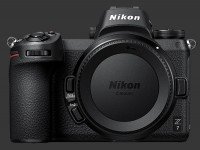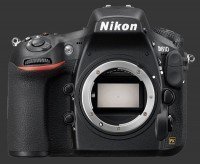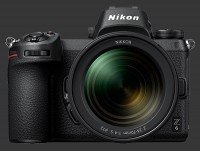Nikon Z6 Review
Nikon Z6 Introduction
The Nikon Z6 is one of two Full-Frame Mirrorless Digital Cameras that Nikon launched simultaneously to introducte their platform new Z-platform. It has a modern fully electronic lens mount with a 56mm throat diameter, ultra-short 16mm flange distance and high-speed communication link between camera and lens. The Z-mount opens up the posibility of ultra-bright optics that maintain high image-quality and consistency across the frame.
Nikon made both mirrorless to capture two market segments of professional photographers. While the Z7
Nikon Z7 is leading in terms of resolution and commanding a high price for it, the Z6 reviewed here delivers highly competitive value with a lower resolution that allows it to be faster and more sensitive to light. The Z6 is built around a 24 megapixels CMOS sensor with built-in 273-Point Phase-Detect AF system and no anti-alias filter. For the first time in a Nikon interchangeable lens camera, the Z6 is equipped with a state-of-the-art built-in sensor stabilization system. It compensates for camera shake along 5 axis and is effective to 5 stops over hand-holding.
This mirrorless has an enormous exposure lattitude with an ISO 100-51200 sensitivity range which is expandable to ISO 50-204800. The mechanical shutter operates from 1/8000 to 30s and allows Bulb exposures. An Electronic Front-Curtain Shutter mode covers the 1/2000 to 30s range. Ths sensor is paired with a EXPEED 6 processor to deliver up to 12 FPS and 4K Ultra-HD video captured from the entire sensor area. Continuous drive drops to 5.5 FPS when keeping continuous AF and AE.
Being a mirrorless, the Nikon Z6 uses an EVF for framing. Its EVF is one of the most advanced and incredible ones on the market. The 0.5" EVF unit has 3.6 megapixels of resolution with a best-in-class 0.8X magnification and 100% coverage, plus an essential Eye-Start Sensor. This EVF is designed for minimal blackout and extreme accuracy, running at full-resolution even in preview mode.
The body of this mirrorless is designed to be compact yet comfortable while providing all essential controls and a highly customizable interface. There are dual control-dials, a traditional mode-dial, an 8-way joystick, 4-way controller and a large number of controls all over the camera. Although it does not sport a built-in flash, the Z6 is highly expandable. It offers a standard hot-shoe. wired remote port, 10-bit 4K HDMI output, USB-C, WiFi and Bluetooth 4.2 LE connectivity. This camera has a single XQD memory card slot, thus moving away from SDXC and missing one high-end feature which is dual memory card slots. Power is provided by the same battery as the D850 or a new variant which supports in-camera charging via the USB-C port.
In this in-depth digital camera review, the Nikon Z6 is analyzed in terms of features, usability, ergonomics, performance, image quality and controls.

Nikon Z6 Features
Sensor
- 24 Megapixels BSI-CMOS sensor
- Full-Frame imaging area
- No Anti-Alias Filter
- On-sensor Phase-Detect AF
- Built-in Image-Stabilization, 5-stop
- 5-Axis with native Z-mount lenses
- 3-Axis with adapted F-mount lenses
- Standard ISO 100 - 51,200 range
- Expanded ISO 50 - 204,800 range
- Customizable Auto ISO
- Built-in Dust-Reduction
- JPEG, TIFF, RAW or JPEG+RAW Output
Exposure
- PASM exposure modes:
- 1/8000s - 30s Mechanical Shutter
- 1/2000s - 30s EFCS
- Bulb and Timed exposure
- EC, ±5 EV, 1/2 or 1/3 EV steps
- FC, -3...+1 EV, 1/2 or 1/3 EV steps
- Matrix, Highlight-Weighed, Center-Weighed, Average & Spot metering
- AE, Flash or AE+Flash Bracketing: 2, 3 or 5 frames, maximum 3 EV steps, 7 or 9 frames, maximum 1 EV steps
- Exposure Fine-Tuning, ±1 EV, 1/6 EV steps
- Exposure and ISO steps of ½ or 1/3 EV
- HDR, 2 shots, 1-3 EV steps, 3 blending levels, single image or series
- Optional Electronic Front-Curtain Shutter
Focus & Drive
- 273-Point Phase-Detect autofocus system
- Focus Drive: Single-Shot or Continuous
- Focus Selection: Pinpoint, Single, Dynamic, Small Wide-Area, Large Wide-Area and Auto
- 12 FPS Drive, 42 JPEG or 24 RAW
- Customizable Self-Timer, 1-9 Shots, 2-20s Start Delay, ½-3s Interval
- Exposure-Delay, 0.2-3s
- Multiple-Exposure: 2-10 shots, 4 Overlay modes
- Interval-Timer:
- 1-9999 Times, 1-9 Shots
- ½s-24h Frame Interval
- 1min-1week Start Delay
- Optional Exposure-Smoothing
- Optional Silent Photography
- Optional Interval Priority
- Separate Storage Folder
- Focus Shift Shooting
- 1-300 Frames
- 10 Step Sizes
- 0-30s Interval
- Optional AE-L on first-frame
- Optional Peaking on stacked image
- Optional Silent Photography
- Separate Storage Folder
Images Parameters
- AutomaticThree types: Normal, Remove Warm Colors & Preserve Warm Colors, Preset, Kelvin and Custom6 Memories WB
- Preset White-Balance Fine-Tuning, 49 steps along G-M axis, 25 steps along A-B
- Kelvin White-Balance Fine-Tuning,G-M, 49 steps
- Picture Styles, 8 built-in, plus user-defined ones
- Adjustable Sharpness, 49 steps
- Adjustable Mid-Range Sharpness, 41 steps
- Adjustable Clarity, 41 steps
- Automatic or Manual Contrast, 25 steps
- Automatic or Manual Saturation, 7 steps
- Manually Adjustable Hue, 25 steps
- Manually Adjustable Brightness, 13 levels
- Virtual WB Bracketing, 2-9 frames, 3 steps, 2 axis
- Virtual Active D-Lighting Bracketing, 2 - 5 frames
- Optional High-ISO Noise Reduction, 3 levels
- Optional Long Shutter Noise Reduction
- Optional Diffraction Correction
- Optional Distortion-Correction
- Optional Vignetting-Correction, 3 levels
- Optional Active D-Lighting (ADL), 4 levels or Auto
- Optional Dust-Off reference photo
- In-Camera RAW development
- sRGB or AdobeRGB color space
Controls
- Dual control-dials
- 8-Way joystick
- 8-Way controller
- Traditional Mode-Dial
- Dedicated ISO button
- Dedicated Drive-Mode button
- Configurable AF-On button
- 2 Customizable Function buttons
- Customizable Video-Record button
Viewfinder & Displays
- 0.5" EVF
- 3.6 Megapixels
- 0.8X Magnification
- 100% Coverage
- Eye-Start Sensor
- 3.2" Tilting LCD
- 2.1 Megapixels
- 100% Coverage
- Touchscreen
- OLED Top Status Display
- Dual-Axis Digital-Level
- Sound-Level monitor
Body & Construction
- Nikon Z-mount
- Weatherproof body
- Standard Hot-Shoe
- Wired Remote port
- USB-C port
- 4K Ultra-HD HDMI output
- Built-in Bluetooth 4.2 LE
- Built-in WiFi
- Single XQD memory slot
- Proprietary Lithium-Ion battery
- Metal tripod mount
Video
- 3840x2160 @ 30 FPS 16:9 Ultra HD 4K
- 1920x1080 @ 120 FPS 16:9 HD
- Time Lapse Video
- 1s-10m Interval
- 1m-8h Duration
- Optional Silent Photography
- Optional Interval Priority
- MPEG-4 or Quicktime H.264 codec
- Flicker Reduction, 60Hz, 50Hz or Auto
- Built-in microphone, 20 levels
- Wide or Vocal Frequency Response
- Optional Wind Noise Reduction
- Optional Attenuator
- Optional Time-Code
- Stereo Audio Input mini-jack
- Stereo Audio Output mini-jack
NOTE - The Nikon Z6 and Z7 are physically identical and so this review skips the Usability page. For a full analysis of ergonomics, see the Nikon Z7 Usability Page. The Capability section below is also very similar since most features are common between these two mirrorless cameras.
Nikon Z6 Capability - What can it do?
At its heart, the new Nikon Z6 features a 24 megapixels Full-Frame BSI-CMOS sensor using state-of-the-art technology. This sensor is not covered by an Anti-Alias Filter in order to maximize the amount of details captured. The Z6 sensor incorporates a 273-Point Phase-Detect AF system which covers a significant portion of its surface area. Built-in Phase-Detect Autofocs never needs calibration as it always focuses exactly on the sensor-plane.
The fast EXPEED 6 processor in the Z6 can continuously capture full-resolution images at an impressive 12 FPS. This is one area where the Z6 exceeds its sibling which can shoot at 9 FPS. Both cameras slow down to 5.5 FPS when using continuous autofocus and auto-exposure. The sensor and processor together make it possible to capture 4K Ultra-HD 30 FPS using the full-width of the sensor. Since the Z6 has a lower native resolution than the Z7, it can record video without skipping pixels which results in smoother output.

There are very few features that the Z6 does not offer. The most notable is the absense of a built-in flash, although professionals rarely use one given the unnatural look that results. External lighting is supported via a standard hot-shoe but the Z6 does not offer a Sync-Port which is often used for wired off-camera lighting.
With the introduction of the Z-platform, Nikon brought in in-body image-stabilization to their interchangeable lens cameras for the first time. This new 5-axis Image-Stabilization System compensates for horizontal and vertical shift plus pitch, yaw and roll rotation to reduce for camera shake. It gives a 5-stop advantage over hand-holding in idieal conditions. Having this mechanism makes every lens to be stabilized, including bright primes, fisheye and tilt-shift lenses. Nikon even implemented cooperative image-stabilization which separates the axis of stabilization between body and lens for lenses that feature Vibration Reduction. At this point, it is unknown if this works when using adapted third-party lenses, as there are no native third-party Z-mount lenses.
Being mirrorless, the Nikon Z6 operates much more quietly than a DSLR. There is still a mechanical shutter that covers a 1/8000-30s shutter-speed range. This mirrorless offers a Electronic Front-Curtain Shutter which operates by fullushing the sensor electronically and closing the mechanical shutter at the end of the exposure to perform the read-out. This reduces the amount of camera vibration which should reduce shake-induced softness. To further reduce shake, Nikon offers the same Shutter-Delay options as on the D850, a customizable pause of 0.2-3s between the time the shutter-release is pressed and the mechanical shutter opens, allowing vibration to settle down before exposure starts.
Nikon kept their class-leading Interval Timer in the Z6. The Interval Timer is controlled separately from drive modes. One can specify the number of intervals and the number of shots taken at each interval. With AEB, this can be used to create an HDR time-lapse. The interval can be between ½s and 24h and number of intervals between 1 and 9999. Between 1 and 9 shots can be taken at each interval. A Start Time can be specified up to 1 week in advance even. There are plenty of options:
- Exposure Smoothing - This option, available for Time Lapse Video, dampens changes in exposure between shots. This reduces Automatic Exposure changes between shots to smooth transitions.
- Silent Photography - Forces the use of the electronic shutter to reduce noise from the camera.
- Interval Priority - This decides whether the interval or the shutter-speed has priority. When Interval Priority is On, images are always taken at the given interval, even if more time is required for the exposure.
- Starting Storage Folder - Allows the sequence of images produced to be stored in a folder separately from other images and videos.
There is a separate Time Lapse feature which automatically creates a video from a series of frames. The interval between frames can be selected from 1s to 10m in 1s increments, while the total capture time can reach up to 8 hours. Intelligently, this digital camera warns in advance if sufficient memory is not available. Time Lapse video are rendered at the selected movie resolution and frame-rate. Crucially tough, they are framed at a 16:9 aspect-ratio. An Exposure Smoothing option makes changes in Auto Exposure more gradual during recording of a Time Lapse Video. Time Lapse Video inherits the same Silent Photography and Interval Priority options as the Interval Timer. The maximum resolution supported by Time Lapse Video is 4K Ultra-HD.

Focus Bracketing which Nikon calls Focus Shift made its way to the Z6 with the a class-leading level of sophistication. The camera can take up to 300 shots, changing focus between shots by a selected increment on a 1-10 linear scale. The interval between each shot can be set from 0 to 30 seconds in one second increments. Nikon mentions the need to set the interval when using a flash, so that it has time to recharge between shots. Just like with the Interval Timer, there are options for Exposure Smoothing, Silent Photography and a Starting Storage Folder.
Four metering patterns are available on this mirrorless: Matrix, Highlight Weighed, Center-Weighed/Average and Spot. Highlight Weighed, introduced on the Nikon D810
Nikon D810, provides a segmented metering system that gives priority to highlights. Spot is for Spot metering. Depending on a custom setting, the third choice activates Average or Center-Weighed metering. Note that the center-area of Center-Weighed metering is no longer resizable.
Auto-Exposure Bracketing can be enabled for 2 to 9 frames with steps up to ±3 EV when taking 5 frames or less. One can bracket exposure parameters, flash or both. Virtual Bracketing for WB or Adaptive D-Lighting can be performed instead with 3 step sizes for WB and 5 for ADL. In both cases, only one photo is taken but it is rendered multiple times. For obvious reasons, Virtual Bracketing only applies to JPEG.
Standard ISO sensitivities run from 100 to 51,200. Expanded ISO values are identified by label. ISO 50 is called L 1.0. ISO 102,400 is called H 1.0 and ISO 204,800 is called H 2.0. Half-stops or third-stops are available. Auto ISO is configured by specifying a maximum ISO sensitivity, plus a minimum shutter-speed. The Z6 then adjusts the chosen ISO within the permitted range to obtain at least the specified shutter-speed. Note that this is shifted one stop higher compared to the Z7. This is just physics at work, the sensor reacts the same way to light but fewer pixels in the same area means that each pixel is larger and therefore collects more photons.

There are three types of Automatic White-Balance. One attempts to render whites as neutral, one tries to make them look natural and the last preserves warm lighting. Other White Balance options are quite numerous. There are 6 presets With 7 sub-types for Fluorescent: Sodium-Vapor, Warm-White, White, Cool-White, Day-White, Daylight, High Temperature Mercury Vapor.. Custom WB now has 6 memories. Each nicely shows a thumbnail of the image from which it was recorded. A small selectable area can be sampled. Kelvin WB can be selected between 2500K and 10000K. WB Fine-Tuning offers two axis except for Kelvin which only supports the G-M axis. Regardless, there are always 49 steps along G-M and 25 along B-A. The temperature span along each axis is actually the same, only Nikon allows ¼-point for one and ½-point increments for the other.
This camera features Nikon's Active D-Lighting image processing technology which lightens up dark areas of images to bring out details. There are 5 levels of ADL which differ by how much shadows get boosted. ADL can be manually or automatically set to one of those levels or turned off entirely. ADL indirectly affects RAW capture because exposure is adjusted according to the selected ADL level.
The Nikon Z6 can capture JPEG or TIFF images and RAW files, using the Nikon NEF format. RAW files may be uncompressed, losslessly compressed or compressed with loss. Lossless compressive saves on average 40% space without any drop in quality, so this is the recommended option. Optionally, RAW depth can be reduced to 12-bits per pixel, down from 14-bits per pixel. This saves 20% storage space at the expense of 2 stops of precision. When shooting continuously, the Z6 can record 42 JPEG images or 24 RAW files per burst. The buffer does clear very quickly though thanks to the exclusive use of XQD memory. One loss compared to high-end DSLRs is that the Z6 features just a single memory card slot to keep the camera relatively compact.
The new all-electronic Z-mount is designed to allow extremely sharp optics with large maximum apertures. In the long term, the success of this new platform will determine if and when this goal gets realized. For the moment, there not many native Z-mount lenses. This includes a versatile 24-70mm F/4 zoom, an ultra-wide angle zoom and several F/1.8 prime lenses. To encourage existing Nikon DSLR uses to adpot this, Nikon built a dedicated F-to-Z mount which is said to allow maximum peformance to be retained in the majority of lenses. Autofocus is only supported for AF-S lenses as the adapter does not feature mechanical couplings.
 |
Please Support Neocamera
All information on Neocamera is provided free of charge yet running this website is a huge endeavor. Purchases made via affiliate links found throughout the site help keep it running and up-to-date. There is no additional cost to you, so please consider buying via these links to our affilates:
Thank you for your support!
Nikon Z6 Highlights

Sensor-Size: 36 x 24mm

Actual size when viewed at 100 DPI
| 24 Megapixels Mirrorless | ISO 50-204800 |
| Nikon Z Mount 1X FLM | Shutter 1/8000-30s |
| 5-Axis Built-in Stabilization, 5-Stop Improvement | Full manual controls, including Manual Focus |
| 0.50" Built-in EVF 3.7 Megapixels (0.80X) | Custom white-balance with 2 axis fine-tuning |
| Automatic Eye-Start sensor | Spot-Metering |
| 2 Axis Digital Level | Hot-Shoe |
| Weatherproof | Stereo audio input |
| Built-in Dust Reduction | Lithium-Ion Battery |
| 12 FPS Drive, 42 Images | XQD, CF Express Type B |
| 3840x2160 @ 30 FPS Video Recording | |
| 3.2" LCD 2.1 Megapixels |
Updates
2025.11.13

Best Gifts for Photographers in 2025 by Budget
The annual Neocamera Photography Gift Guide updated to 2025. Find great gifts for photographers with any price budget.
2025.07.07

Stellar Photo Recovery Review
Review of Stellar Photo Recovery V12. This Windows and MacOS software can recover photos and videos in a huge number of formats from memory cards, USB drives, SSDs and HHDs.
2025.05.14

Huion Kamvas 13 Gen 3 Review
In-Depth review of the Huion Kamvas 13 Gen 3 Pen Display Tablet for photographers and graphic artists.
2025.01.18

Fujifilm GFX 2025 Lens Roundup
Lens Review roundup of Fujifilm GFX Medium-Format lenses. Quality, performance and handling of the GF20-35mm F/4R WR, GF30mm F/3.5 Tilt-Shift and the GF55mm F/1.7.
2024.11.18

Best 2024 Photography Gifts for Every Budget
Great gifts for photographers and photo enthusiasts selected for every budget among the best products of 2024.
2024.08.07

Eye Protection Tips for Professional Photographers
The four main considerations for professional photographers regarding eyewear.
2024.07.14

Fujifilm X100VI Review
Flagship fixed-lens compact digital camera with a 40 MP sensor and Image-Stabilization, a first for the series. Retro design featuring dual control-dials, plus direct ISO, Shutter-Speed and EC dials. Its hybrid viewfinder can switch between EVF and OVF mode.
2024.05.09

Fujifilm GFX100 II Review
Flagship 102 Megapixels Medium-Format Mirrorless Digital Camera with 8-Stop 5-Axis IBIS, 8 FPS Drive, 8K Video and 400 MP Super-Resolution capture in a weatherproof and freezeproof body with dual control-dials and dual memory-card slots.
2024.04.03

Fujifilm X-T5 Review
Newest Fujifilm flagship boasting a 40 MP APS-C sensor, 5-axis IBIS with 7-stop efficiency, 15 FPS continuous drive, 6.2K Video capture, dual control-dials and dual SDXC UHS-II slots in a sturdy weatherproof and freezeproof body.
2023.11.20

Best Digital Cameras of 2023
Find out which are the Best Digital Cameras of 2023. All the new Mirrorless Digital Cameras from entry-level to high-end professional.
2023.07.10

Fujifilm X-H2 Review
40 Megapixels APS-C Hybrid Mirrorless Digital Camera with 7-stop IBIS. Fastest shutter ever and 8K video capture. Large builtin EVF with 0.8X magnification and 5.8 MP, plus an Eye-Start Sensor. Packed with features and large number of controls in a weatherproof and freezeproof body.
2023.05.07

Sony FE 20-70mm F/4G Review
Review of the unique Sony FE 20-70mm F/4G lens. The optical zoom of this lens spans ultra-wide-angle and medium focal-length coverage, making it one of the most versatile Full-Frame lenses on the market.












